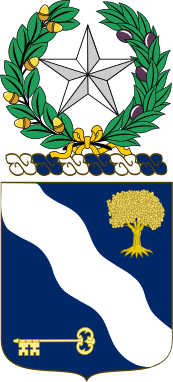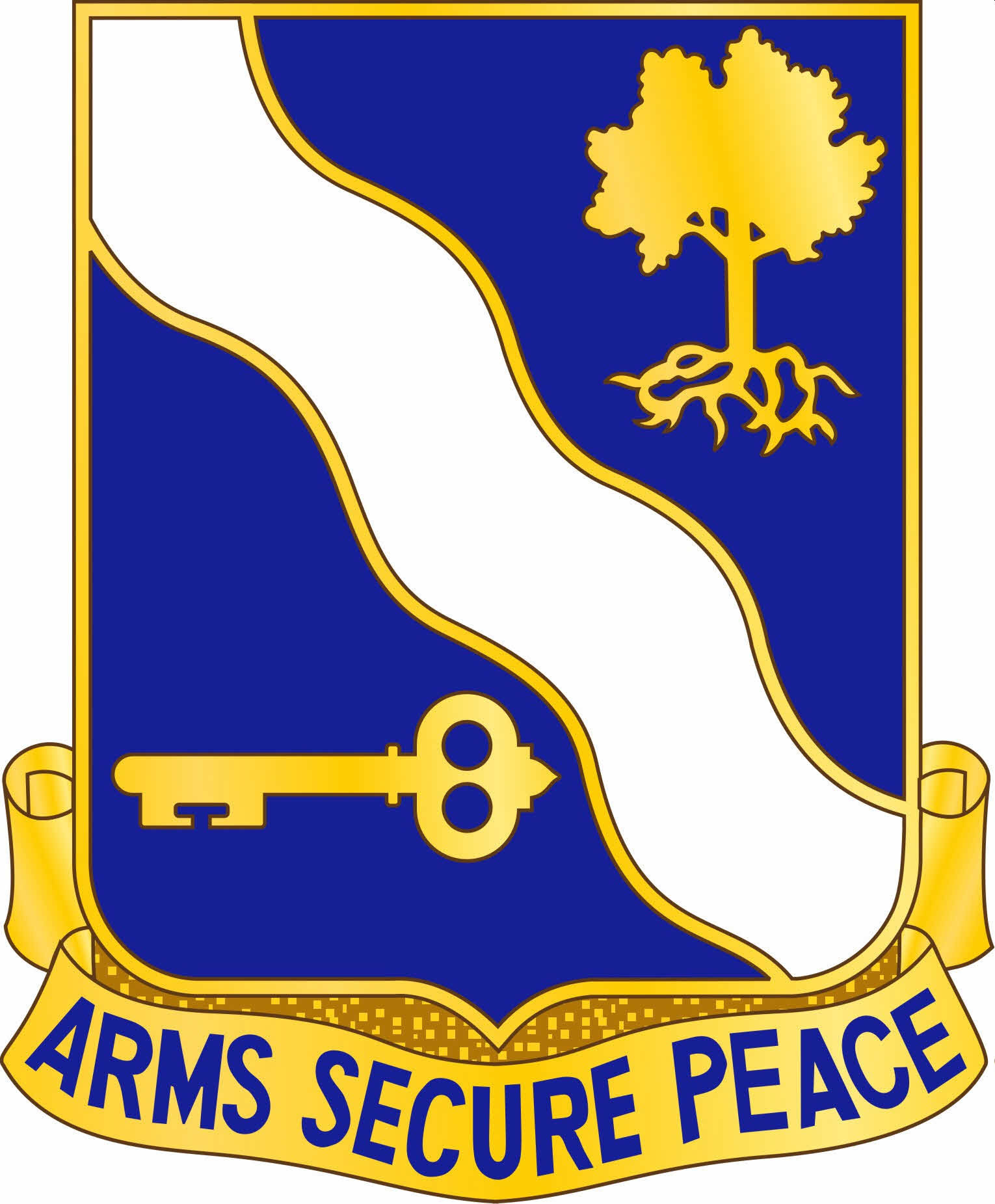About 1st Battalion (Airborne), 143rd Infantry Regiment1st Battalion (Airborne), 143rd Infantry Regiment
MOTTO: "Arms secure peace"
The 143rd Infantry, Texas National Guard, was organized in 1880 as the Third Regiment of Infantry, Texas Volunteer Guard. In 1903, the designation of the regiment was changed from the Third Regiment, Texas Volunteer Guard, to the Third Infantry, Texas National Guard.
Five of the companies of the regiment were activated into Federal service for the Spanish-American War, and one company served in the Army of Occupation in Cuba, from December 1898, to March 1899. The Third Infantry, Texas National Guard, served on the Mexican Border during the disturbances of 1916-17.
The regiment was drafted into Federal service for World War I on August 5, 1917. Organized under the 36th Division, 72nd Infantry Brigade, the Third Infantry, Texas National Guard was combined with the Fifth Infantry, Texas National Guard to make up the 143rd Infantry. The troops of the 143rd arrived in France in the early summer of 1918, training near Bar-sur-Aube. The 143rd entered the reserve of the French Armies of the Center on September 26, 1918, and later went into the line on October 3rd, relieving a regiment of the U.S. 2nd Division. They came under fire on October 10th, 1918, and fought through several days of bitter battle to gain the northern bank of the Aisne River by October 12th. The regiment was relieved from front line duty on October 28, and all the regiments of the 36th Division were put in the reserve of the First American Army until the Armistice. The 143rd Infantry, Texas National Guard, is entitled to bear on its colors a streamer denoting Meuse-Argonne campaign credit.
The 143rd was mobilized for World War II on November 25, 1940, and shipped overseas on April 2nd 1943, landing in Algeria. In September 1943 the Regiment went ashore near Salerno (Paestum), fighting one of the bloodiest battles of the unit's history. Later in December, 1943, the Regiment assaulted the "Winter Line" near San Pietro, with the First Battalion receiving an Army Commendation for their valor. The capture of San Pietro by 36th Division troops opened the Liri Valley, breaking the "Winter Line". The Regiment endured a bloody battle in attempting the crossing of the Rapido River in January, 1944. The 143rd reinforced Fifth Army in the Anzio beachhead in May 1944, and moved rapidly around to the rear of Velletri and arrived at the outskirts of Rome. In August, 1944, the Regiment was part of the 36th Division landing on Green Beach on the south coast of France, and soon - with the 141st - were part of the "Rhone River Bottleneck", virtually destroying the fleeing German 19th Army. After the liberation of Lyon on 2 September, 1944, the regiment began the Vosges campaign near the German border. They fought a terrible battle near Weyerscheim with the Germans in January, 1945. The last great battle of the war for the regiment was the effort to breach the Seigfried Line and reach the Rhine River. The 143rd was awarded campaign credit for Naples-Foggia, Anzio, Rome-Arno, Southern France, Rhineland, Ardennes-Alsace, and Central Europe.
Today 1st Battalion, 143rd Infantry Regiment is an airborne infantry unit and aligns under the 173rd Airborne Brigade Combat Team as part of the Associated Unit Program, aligning active and reserve units with one another for training and deployment.
The 143d was mobilized in support of the Global War On Terrorism from 2011-2012. It conducted mobilization training at Camp Atterbury, Indiana, and deployed to Afghanistan in February 2012 to conduct missions in support of Operation Enduring Freedom. The primary mission of the 143d was service as security forces for Provincial Reconstruction Teams (PRTs) throughout the country. Headquarters and Headquarters Company was assigned to the capital city, Kabul, helping to secure and manage the operation of multiple bases in the area.
Coat of Arms: Distinctive Unit Insignia:

 Shield: Azure, a bend wavy argent between an oak tree eradicated and a key.
Shield: Azure, a bend wavy argent between an oak tree eradicated and a key.
Crest: On a wreath of the colors argent and azure a mullet argent encircled by a garland of live oak and olive proper.
Symbolism
The shield is blue for infantry, the bend wavy represents the regiment's service on the Mexican border along the Rio Grande. It also represents the Aisne River in France, where the unit served in World War I.
The oak tree symbolizes the Meuse-Argonne operation. The gold key represents service in the Spanish–American War.